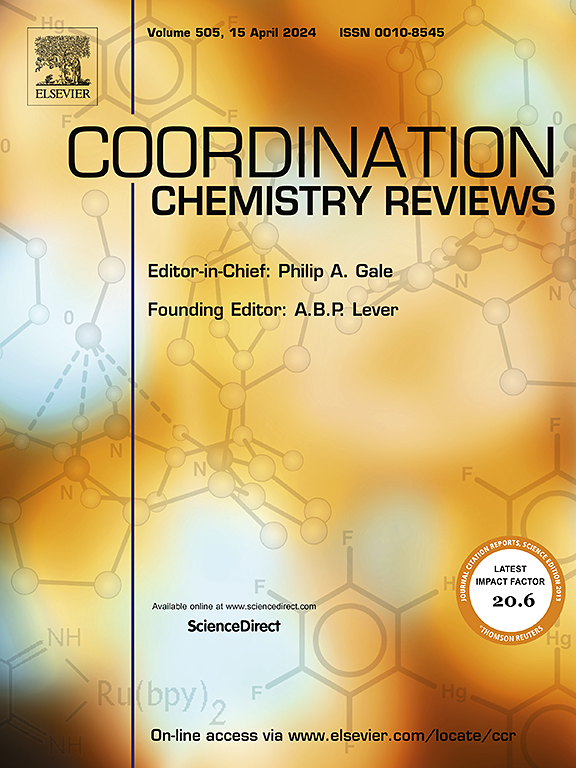Covalent organic cages in supramolecular separation
IF 20.3
1区 化学
Q1 CHEMISTRY, INORGANIC & NUCLEAR
引用次数: 0
Abstract
Covalent organic cages (COCs), distinguished by their discrete, three-dimensional architectures with customizable cavities, represent a rapidly advancing class of molecular materials with broad applications, including microreactors, heterogeneous catalysis, high-permeability membranes, and porous liquids. Recent advancements in synthetic strategies and supramolecular chemistry have enabled a diverse range of COC structures, which, like metal-organic frameworks (MOFs), covalent organic frameworks (COFs), and porous organic polymers (POPs), provide high surface areas, accessible porosities, and tunable architectures. Unlike these extended porous networks, COCs are composed of discrete, solvent-soluble units, facilitating enhanced dispersion, processability, and recyclability. Their dynamic features, including reversible polymorphism and supramolecular interactions, support dissociation and recombination, further enhancing their adaptability and shape persistence. This review examines recent progress in the use of COCs for supramolecular separations, with a focus on their utility in separating gases, ions, enantiomers, and positional isomers, as well as in the development of pure and hybrid porous membranes. By synthesizing current findings, we aim to assist researchers in designing COCs tailored to specific industrial separation applications, highlighting the increasing relevance of these materials in separation science.


超分子分离中的共价有机笼
共价有机笼(COCs)以其离散的三维结构和可定制的腔体而著称,代表了一类快速发展的分子材料,具有广泛的应用,包括微反应器,多相催化,高渗透膜和多孔液体。合成策略和超分子化学的最新进展使各种COC结构成为可能,如金属有机框架(MOFs)、共价有机框架(COFs)和多孔有机聚合物(pop),它们提供了高表面积、可访问的孔隙率和可调的结构。与这些扩展的多孔网络不同,COCs由离散的溶剂溶性单元组成,有助于增强分散性、可加工性和可回收性。它们的动态特性,包括可逆多态性和超分子相互作用,支持解离和重组,进一步增强了它们的适应性和形状持久性。本文综述了COCs用于超分子分离的最新进展,重点介绍了COCs在分离气体、离子、对映异构体和位置异构体以及纯多孔膜和杂化多孔膜方面的应用。通过综合目前的研究结果,我们的目标是帮助研究人员设计适合特定工业分离应用的COCs,突出这些材料在分离科学中的日益增长的相关性。
本文章由计算机程序翻译,如有差异,请以英文原文为准。
求助全文
约1分钟内获得全文
求助全文
来源期刊

Coordination Chemistry Reviews
化学-无机化学与核化学
CiteScore
34.30
自引率
5.30%
发文量
457
审稿时长
54 days
期刊介绍:
Coordination Chemistry Reviews offers rapid publication of review articles on current and significant topics in coordination chemistry, encompassing organometallic, supramolecular, theoretical, and bioinorganic chemistry. It also covers catalysis, materials chemistry, and metal-organic frameworks from a coordination chemistry perspective. Reviews summarize recent developments or discuss specific techniques, welcoming contributions from both established and emerging researchers.
The journal releases special issues on timely subjects, including those featuring contributions from specific regions or conferences. Occasional full-length book articles are also featured. Additionally, special volumes cover annual reviews of main group chemistry, transition metal group chemistry, and organometallic chemistry. These comprehensive reviews are vital resources for those engaged in coordination chemistry, further establishing Coordination Chemistry Reviews as a hub for insightful surveys in inorganic and physical inorganic chemistry.
 求助内容:
求助内容: 应助结果提醒方式:
应助结果提醒方式:


